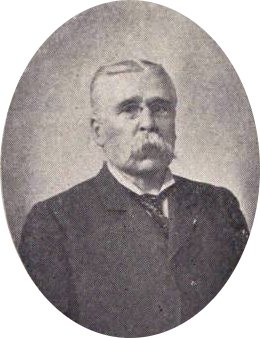Luigi Palma di Cesnola facts for kids
Quick facts for kids
Luigi Palma di Cesnola
|
|
|---|---|

Cesnola circa 1900
|
|
| Born | July 29, 1832 Rivarolo Canavese, Italy |
| Died | November 20, 1904 (aged 72) New York City |
| Place of burial |
Kensico Cemetery
Valhalla, New York |
| Allegiance | |
| Service/ |
Union Army |
| Years of service | 1849–1854 (Sardinia) 1854–1856 (UK) 1862–1865 (USA) |
| Rank | |
| Unit | |
| Commands held | 4th New York Volunteer Cavalry Regiment |
| Battles/wars | First Italian War of Independence Crimean War American Civil War |
| Awards | Medal of Honor |
Luigi Palma di Cesnola (born July 29, 1832 – died November 20, 1904) was an Italian-American soldier, diplomat, and archaeologist. He was born in Rivarolo Canavese, a town near Turin, Italy. He earned the Medal of Honor for his brave actions during the American Civil War. Later, he served as the United States consul in Larnaca, Cyprus, from 1865 to 1877. He also became the first Director of the Metropolitan Museum of Art in New York, leading it from 1879 until his death in 1904.
Contents
Early Life and Military Career
Luigi Palma di Cesnola was born in 1832 in Rivarolo Canavese, Italy. His father was a count and a military officer. When Luigi was just 15 years old in 1848, he joined the Sardinian army. He fought in the First Italian War of Independence. During a battle in 1849, he showed great bravery and was promoted to second lieutenant.
In 1851, he finished his studies at the Royal Military Academy. A few years later, in 1854, he left the Sardinian army. He then joined the British Army and served in the Crimean War. He worked as an aide for General Enrico Fardella during this time.
Life in America and the Civil War
In 1858, Luigi moved to New York City. He started by teaching Italian and French. In 1861, he married Mary Isabel Reid. Her father was a famous war hero, Commodore Samuel Chester Reid.
Luigi then opened a private military school. In just six months, he trained more than 700 students to become officers. In 1862, he joined the American Civil War as a colonel. He led the 4th New York Cavalry Regiment and was known as Louis P. di Cesnola.
During the Battle of Aldie in June 1863, Colonel di Cesnola was injured and captured. He was held as a prisoner in Libby Prison. For his brave actions in this battle, he received the Medal of Honor. He was released from prison in early 1864. He continued to serve in important campaigns until the war ended in 1865.
Archaeology and Museum Work
After the war, Luigi Palma di Cesnola became the United States consul in Larnaca, Cyprus. He held this position from 1865 to 1877. While living in Cyprus, he became very interested in ancient history. He started to dig for old artifacts, especially around a place called Kourion.
During his excavations, he found a huge number of ancient objects. He collected about 35,000 pieces of antiquities. One of the ships carrying some of these items, the Napried, was lost at sea with about 5,000 pieces.
In 1872, the Metropolitan Museum of Art in New York bought his large collection of artifacts. In 1879, Cesnola became the first director of this famous museum. He led the museum until he passed away in 1904. There were some discussions about how he collected and restored some of the artifacts. A special committee looked into these concerns and supported his work. However, in Cyprus, some people still have different views on how he collected these ancient treasures.
Writings and Recognition
Luigi Palma di Cesnola wrote a book called Cyprus, its ancient Cities, Tombs and Temples (1877). This book was very helpful for people interested in ancient history and travel. He also created a detailed guide called Descriptive Atlas of the Cesnola Collection of Cypriote Antiquities, which came out in three parts between 1884 and 1886.
He received special honors from Columbia and Princeton universities. The King of Italy also gave him a special knightly award. He was a member of several important groups that studied history and art in Europe and America.
Death
Luigi Palma di Cesnola died in New York City on November 20, 1904. He was buried at Kensico Cemetery in Valhalla, NY. His funeral was held at St. Patrick's Cathedral in Manhattan. More than 2,000 important people and mourners attended the service.




